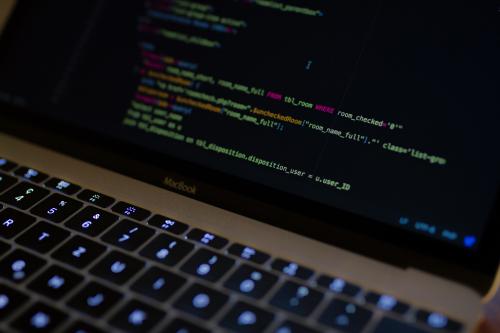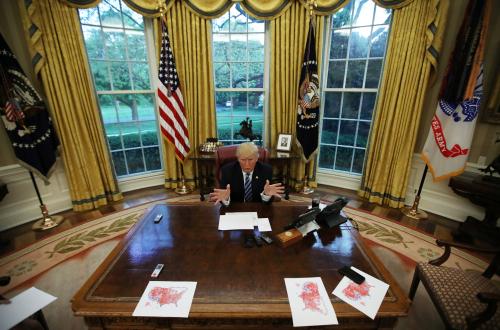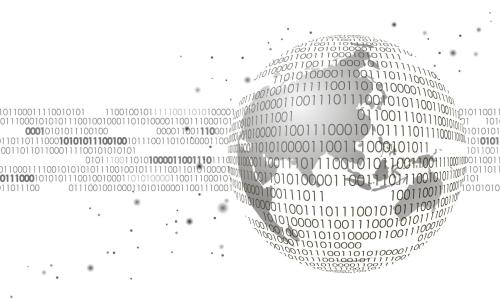Artificial intelligence (AI) is shaking up the world economy
AI is already affecting how economies grow, produce jobs, and trade internationally. McKinsey estimates that AI could add around 16 percent or $13 trillion to global output by 2030. According to an analysis by Paul Daugherty and Mark Purdy of the impact of AI on 12 developed economies, including the United States, AI could double annual economic growth in these countries by 2035.
While the U.S. leads on AI development, other governments are racing ahead with their own AI investment and development strategies. For instance, China, the U.K., and France plan to increase research and development (R&D) funding for AI, as well as education and skills development to expand the pool of workers capable of contributing to AI.
Efforts to develop appropriate international AI governance rules are vital, but not well developed. Any viable approach should avoid a thicket of regulatory approaches that create barriers to the evolution of AI and to the global diffusion of AI products. Some country-level AI strategies, such as those being rolled out by the U.S. and the EU identify the need for such international cooperation.
Creating an enabling environment for AI also will require new regulation in areas such as AI ethics and data access, something the U.S. and the EU are already committed to pursuing. In other cases, existing laws and regulations in areas such as privacy and intellectual property (IP) rules will affect how AI develops.
According to a rough estimate, AI diffusion across major economies is likely to occur over the next 5-15 years. This is the window during which to build trust and to tackle the range of regulatory and broader social concerns associated with widespread deployment.
My new Global Views brief, “Artificial intelligence primer: What is needed to maximize AI’s economic, social, and trade opportunities,” highlights seven steps for maximizing the benefits of AI.
What is AI?
AI is not a specific technology—rather, it is a set of processes including data analytics, enabling technology, applications, and software that make existing processes smarter. This definition underscores AI’s economy-wide application and power as an efficiency multiplier. Existing applications include self-driving cars, human speech and translation, and more efficient supply chains. Currently, AI taps machine learning using large amounts of data and powerful algorithms to develop increasingly robust predictions about the future.
Access to data is imperative when it comes to AI. So, too, are regulations in areas such as privacy, cybersecurity, and IP rights. When they are heavy-handed, such rules can impede access to the data needed to develop AI systems. As a result, getting AI regulation right will require a regulatory response that is also sensitive to how AI systems currently work and are likely to develop.
Trade and AI
AI will profoundly affect trade. For instance, as AI increases productivity growth, firm competitiveness will rise, creating new opportunities for international trade. As AI increases the value of services in economic growth, the share of services in international trade will expand too. There is also potential for AI regulation to hamper trade in AI products. Often, AI is incorporated into a product that is traded, such as autonomous vehicles, aircraft, the internet of things (IoT), and services that use AI. Where each country separately develops AI standards, this can lead to unnecessary regulatory heterogeneity and costs to exporters.
AI’s potential economic and social costs
The diffusion and evolution of AI are likely to have economic and social transition costs, including rising income inequality and job losses. Such outcomes are not pre-ordained, but will require mitigating policies.
AI may have mixed impacts for developing countries. For example, by leading on AI adoption, advanced economies will likely erode developing countries’ comparative advantage in some manufacturing sectors. A lack of skills in developing countries could further exacerbate the AI divide among countries.
Steps for maximizing the benefits of AI
Recently, the U.S. White House issued “Maintain American Leadership in Artificial Intelligence,” an Executive Order that prioritizes investment in AI research and development, making federal data more accessible for AI research, setting AI governance standards, building an AI workforce, and engaging internationally on AI issues. The Executive Order effectively sets out the key areas of focus, though concerns remain as to whether there will be the resources and White House follow-through.
As it evolves, AI regulation needs to be overlaid on an international strategy aimed at building regulatory cooperation and avoiding unnecessary heterogeneity in standards that could create barriers to trade. In many cases, AI will be incorporated into a product that is traded, such as autonomous vehicles, aircraft, the IoT, and services that use AI. Yet, a domestic regulatory agenda pursued without consideration of its international impacts risks undermining global diffusion. For instance, domestic AI standards that require AI to be trained in a particular way, to produce or avoid certain outcomes, or to use specific hardware can all present barriers to trade. This underscores the need for both domestic regulation and international cooperation in areas such as skills development, cybersecurity, privacy, and AI ethics, to name a few.
Summary
Governments are rolling out an array of AI frameworks, including agendas and policies aimed at building domestic AI capabilities. AI development will require regulatory oversight as well as efforts to prepare people for developing and working alongside AI and policies to mitigate AI’s potential economic and social downsides. This matters because some jobs will inevitably be lost due to AI-driven automation, and the potentially significant social effects of AI, if not carefully managed, could lead to a backlash and to regulation that stifles innovation and the diffusion of AI globally. Such a suboptimal outcome would most likely be born disproportionately by developing countries.
At the same time, international coordination on AI regulation, including the development of shared norms and standards, is needed to avoid the proliferation of unnecessary regulatory heterogeneity that raises the cost of AI diffusion globally, including trade in AI-embedded products. Among other things, this will require working with organizations such as the OECD, coordinating with international standard-setting bodies, and including AI disciplines in trade agreements.






Commentary
Maximizing AI’s economic, social, and trade opportunities
May 13, 2019